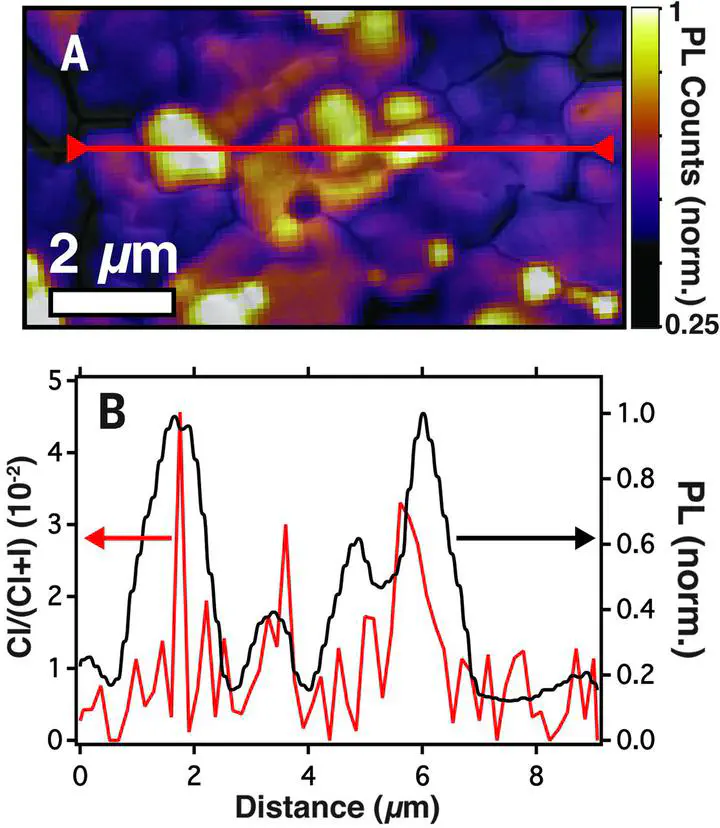
Abstract
The remarkable performance of hybrid perovskite photovoltaics is attributed to their long carrier lifetimes and high photoluminescence (PL) efficiencies. High-quality films are associated with slower PL decays, and it has been claimed that grain boundaries have a negligible impact on performance. We used confocal fluorescence microscopy correlated with scanning electron microscopy to spatially resolve the PL decay dynamics from films of nonstoichiometric organic-inorganic perovskites, CH3NH3PbI3(Cl). The PL intensities and lifetimes varied between different grains in the same film, even for films that exhibited long bulk lifetimes. The grain boundaries were dimmer and exhibited faster nonradiative decay. Energy-dispersive x-ray spectroscopy showed a positive correlation between chlorine concentration and regions of brighter PL, whereas PL imaging revealed that chemical treatment with pyridine could activate previously dark grains.